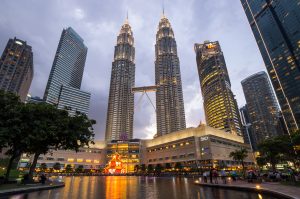2023 was a pretty good year for Indonesia’s state-owned oil and gas giant Pertamina. The firm posted a net profit of $4.8 billion and paid its sole shareholder – the government of Indonesia – over $900 million in dividends. This marks a considerable improvement from 2020, the low point of the COVID-19 pandemic for the oil and gas major, when net profit fell to $823 million on $41.5 billion in revenue.
Pertamina’s financial recovery can be attributed to several things. Obviously, demand for oil and gas bounced back as the pandemic faded and economic activity returned to a semblance of normality. In fact, we might say demand bounced back a little too sharply in 2022 which, along with the Russian invasion of Ukraine, sent the price of oil and gas skyrocketing.
Because of this, in 2022 the Indonesian government allowed Pertamina, which has a near total monopoly on the domestic sale of gasoline, to raise prices by around 30 percent. Even with the price hike, the state still shouldered a heavy financial burden insulating the public from volatility in global energy markets. The final amount was around $22 billion for the year.
State support to Pertamina includes direct subsidies for things like diesel and liquefied petroleum gas, as well as reimbursement for the disparity in the cost of procuring certain types of fuel and the price at which it is sold. In other words, the government will cover the difference if low-cost Pertalite gasoline is sold at IDR 10,000 per liter, but Pertamina’s actual cost is IDR 14,000.
In 2022, because of surging global oil prices, the difference was very wide indeed. The government shelled out nearly $16 billion just to cover the price disparity. In 2023, with energy markets stabilizing and higher prices at the pump the government’s assistance to Pertamina was $12.8 billion, composed of $5.6 billion in direct subsidies and $7.2 billion covering the price disparity.
This is lower than 2022 but still represents a substantial outlay. It is one of the reasons we have seen more signaling from the government that additional fuel subsidy reforms may be on the way. It is also why when we talk about financial performance it’s important to understand that, much like state-owned railway company KAI, Pertamina is not structured as nor does it operate like a profit-generating commercial enterprise.
Pertamina’s primary purpose is to keep fuel prices low for Indonesian consumers, which it does by wielding its considerable structural influence over the supply and distribution of oil and gas and receiving large amounts of financial assistance from the national budget. It is true Pertamina paid the government of Indonesia more than $900 million last year in dividends (the highest payout in years), but that is only a fraction of what the government put into the company.
Pertamina is usefully contrasted with another state-owned oil and gas company just across the Strait of Malacca, Malaysia’s Petronas. Like Pertamina, Petronas is an oil and gas giant owned by the government. It also had a very good year in 2023 (although not as good as 2022), posting a net profit of $17.7 billion on $75 billion in revenue.
But Petronas has a different function and structure than its Indonesian counterpart, with its primary purpose being to generate income for the state, a job it does quite well. Between 2019 and 2023, Petronas paid the Malaysian government over $40 billion in dividends.
What is the main difference between Pertamina and Petronas? The size of the domestic market. Indonesia’s domestic market is much larger than Malaysia’s, and consequently, the majority of Pertamina’s operations are focused on satisfying local demand even at loss-making prices. In 2023, 71 percent of Pertamina’s revenue came from domestic energy sales and only 10 percent from exports.
Petronas’ revenue structure is basically the inverse of that, with 74 percent of 2023 revenue coming from exports or overseas operations and just 26 percent from the domestic market. Because it has a smaller domestic market, Malaysia has more surplus petroleum resources for export and Petronas has been able to focus on becoming an internationalized, profit-making business.
In the 1970s and 1980s, Pertamina functioned a lot more like Petronas does now, generating big revenue streams for the government by exporting Indonesia’s surplus oil. But over the decades domestic demand has increased, while oil reserves have fallen. This has resulted in a narrower focus on domestic energy needs and required substantial government assistance to keep fuel prices stable and affordable.
Although superficially similar, Pertamina and Petronas have thus come to serve quite different functions in their respective political economies and global oil and gas supply chains. And while they both had what we might characterize as good years in 2023, the actual drivers of those financial results were very different.
































